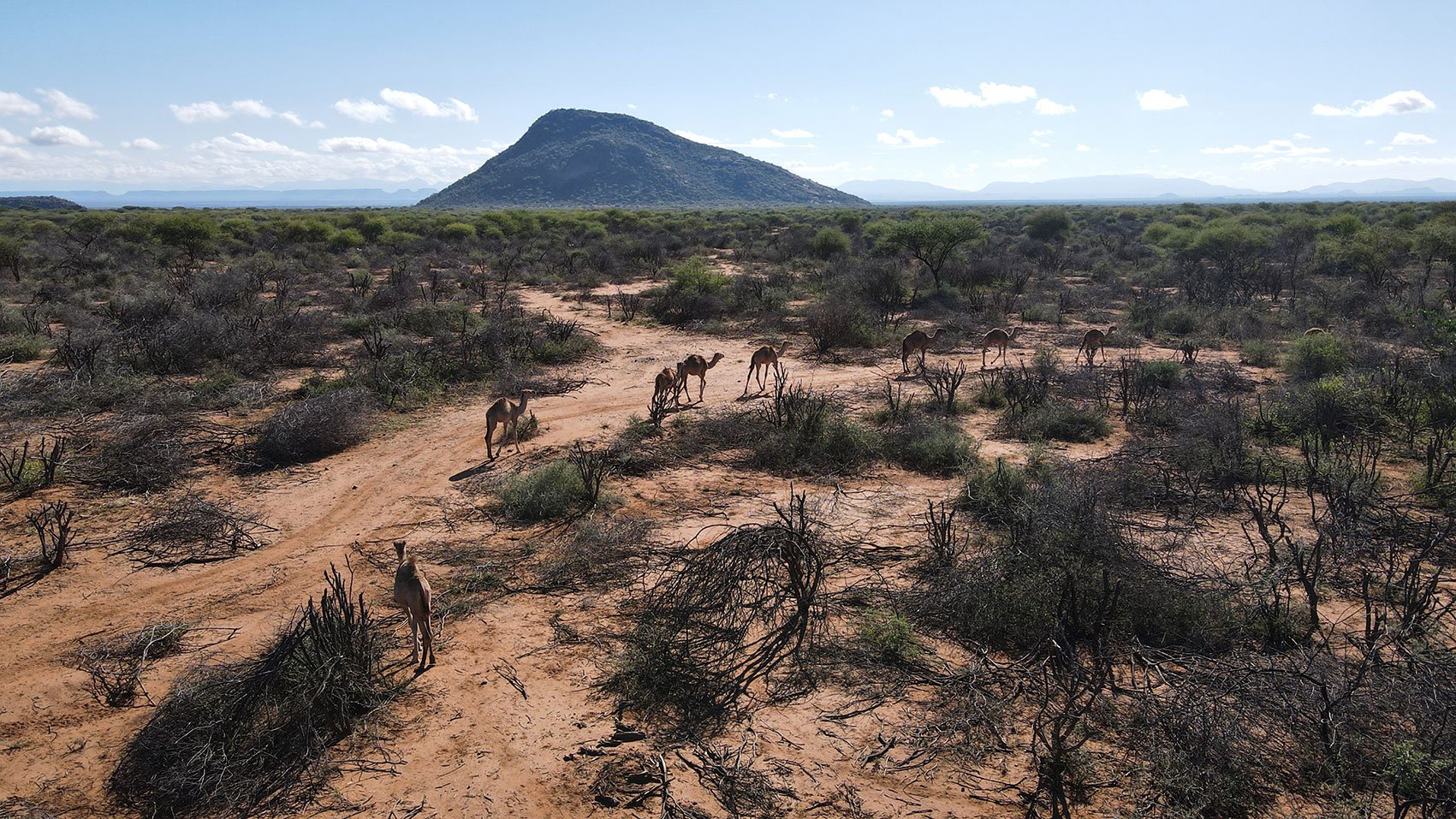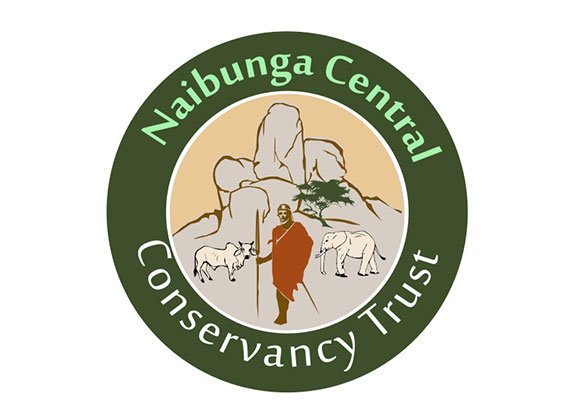
IMPACT
Impact of the Northern Kenya Rangeland Carbon Project
The Project provides increased pasture and forage for herders' animals, as well as improved livelihoods. It has results in:Higher pasture qualityHealthier livestock yielding more milk and meatBetter market prices for livestockIncreased family income from the sale of healthier cattleImproved pasture even in dry season preventing livestock lossReduced grazing conflict, resulting in more peaceGeneration of new streams of incomeBetter way of life for more than 205,000 local people in the community
Carbon sequestration, most crucially, generates a long-term revenue stream that is utilized to fund community-based development programs that benefit local communitiesNon-pastoralists benefit from the revenue generated by carbon credits, which will be used to fund education bursaries, establish school dorms or teacher housing, capitalize microfinance schemes, provide water infrastructure, and build and maintain health facilities, among other uses. They also benefit from the emergence of new long-term revenue streams.The grassland restoration initiatives of the Northern Kenya Rangeland Carbon Project help the region build resilience to climate change while also conserving wildlife habitat.
Sightings of endangered species of elephant, Reticulated giraffe, Grevy’s zebra, Beisa oryx, gerenuk, lion, cheetah, and wild dog have increased across the Northern Kenya Rangeland Carbon Project area since the adoption of planned rotational grazing, in turn, this could enhance tourism in the region, helping to support and sustain other revenue streams for the community as well.
2022-2023 Carbon Community Fund Report
The Carbon Community Fund (CCF) is a community-owned and run fund that facilitates community access to carbon funding in a transparent and accountable way. Each conservancy democratically decides which development projects to fund and which efforts to prioritise.
The CCF facilitates investments in infrastructure and water development, education and bursaries, healthcare, tourism, and youth and women empowerment, among others. Throughout 2022 and 2023, the CCF played a crucial role in addressing pressing community needs, including emergency drought responses and so far the Northern Kenya Community Carbon Project has contributed Ksh 623 million in community development funding.
The 2022-2023 Carbon Community Funding Report shares in detail the funding used over the past two years and documents the impact the project is having on community lives.
Nasuulu Conservancy
Located in Isiolo County, Nasuulu Conservancy is dominated by the Samburu and Turkana ethnic groups. The Conservancy that covers 34,568 hectares of land has a population of about 5,200, where pastoralism is the predominant livelihood. Key wildlife species found here include; Elephant, Eland, Beisa Oryx, Lion, Cheetah, Wild Dog, Grevy’s zebra, and Plains Zebra.
Nasuulu Conservancy partnered with the Northern Kenya Rangelands Carbon Project to undertake the following Development Projects:
Clearing of Langailer - Ngarentare connecting road
Furnishing of Samburu Community School dormitory with beds and mattresses
Construction of Tourism Bandas that will add income streams to the community
Disbursement of bursaries to needy primary, secondary and university students
Lekurruki Conservancy
Lekurruki Conservancy in Laikipia County has a total of 16,866 hectares of land. It is inhabited by Laikipiak Maasai who were historically hunters and gatherers and bee keepers, but assimilation with the neighboring pastoralist tribes meant that the community adopts the pastoralist way of life. Key wildlife species include; Elephant, Eland, Giraffe, Lion, Gerenuk, African Wild Dog, Grevy's Zebra, Plains Zebra, and Buffalo.
Lekurruki Conservancy partnered with the Northern Kenya Rangelands Carbon Project to undertake the following Development Projects:
Resurfacing of roads and airstrip
Tassia Lodge Renovation
Drilling of a borehole
Melako Conservancy
Melako Conservancy is in the heart of Marsabit County. The conservancy covers 1,040,792 hectares of land with a population of about 20,974 people. Ethnic groups are predominantly Rendile and some Samburu; they are semi-nomadic pastoralists, owning herds of cattle, sheep, goats and camels which they herd across the semi-arid landscape. Key wildlife species are: Grevy’s Zebras, Elephant, Beisa Oryx, Giraffes, Lion, Gerenuk, and Sand Grouse.
Melako Conservancy partnered with the Northern Kenya Rangelands Carbon Project to undertake the following Development Projects:
Merrile Mixed Day School solar power installation
Disbursement of school bursaries
Toilet construction in Nairibi dispensary
Silapani water project
Clearing of invasive species in Lontolio
Sakardala Water purifier
Naibunga Central Conservancy
Naibunga Central found in Laikipia County is 14,316 hectares in size. It has a population of about 5,765, with the dominant ethnicity being Laikipiak Maasai. The predominant livelihood is agriculture and pastoralism. Key wildlife species in Naibunga Central include; Elephant, Eland, Oryx, Giraffe, Gerenuk, Lion, Cheetah, Wild Dog, Grevy's Zebra, Common Zebra and Buffalo.
Naibunga Central partnered with the Northern Kenya Rangelands Carbon Project to undertake the following Development Projects:
Kijabe water piping to supply water to the Nabolo community and a school within the community.
Nkiloriti rock water catchment area
Disbursement of bursaries to needy students in the community
Borehole Equipping to a pre-existing borehole
Naibunga Upper Conservancy
Naibunga Upper Conservancy is located in Laikipia County. The conservancy that spans 15,666 hectares of land is inhabited by Laikipiak Maasai and has a population of 6,200, who predominantly practice agriculture and pastoralism for a livelihood. Key wildlife species; Elephant, Eland, Oryx, Giraffe, Gerenuk, Lion, Cheetah, Wild Dog, Grevy's Zebra, Common Zebra, and Buffalo.
Naibunga Upper partnered with the Northern Kenya Carbon Project to undertake the following Development Projects:
Welfare improvements of Naibunga – 10 scouts received attire and rangers’ outposts were constructed enhancing security patrols
Disbursement of bursaries to needy students
Community Welfare Programme
Naibunga Lower Conservancy
Naibunga Lower Conservancy in Laikipia County is inhabited by the Laikipiak Maasai community. It spans 16,559 hectares of land, and has a population of 7,141 people. The communities in this conservancy practice agriculture and pastoralism for a livelihood. Key wildlife species include; Elephant, Eland, Oryx, Giraffe, Gerenuk, Lion, Cheetah, Wild Dog, Grevy's Zebra, Common Zebra and Buffalo.
Naibunga Lower Conservancy partnered with the Northern Kenya Carbon Project to undertake the following Development Projects:
Tiamamut Lodge Construction
Ol’ngaboli Bandas renovation
Koija Star Bed Banda remodeling
Disbursement of bursaries
Kalama Conservancy
Located in Samburu County, Kalama Conservancy covers 49,588 hectares of land. Its ethnicity comprises of the Samburu, with a population of 9,958. The communities practice both pastoralism and tourism for a livelihood. Key wildlife species in this conservancy are; Elephants, Giraffe, Beisa Oryx, Lion, Grevy’s Zebra, Wild Dog, Gerenuk, Lesser and Greater Kudu, Leopard and Cheetah.
Kalama Conservancy partnered with the Northern Kenya Carbon Project to undertake the following Development Projects:
Construction of Girgir Business Complex to increase income streams for the community
Construction of Naandadapo ECDE Center which created a habitable environment for school going children
Construction of Lorubae A and B security Outpost for security enhancement
Westgate Conservancy
Westgate Conservancy in Samburu County has a population of 4,494 and covers 36,294 hectares of land. It is home to the Samburu who predominantly practice pastoralism and tourism for a livelihood. The key wildlife species in the conservancy are; Elephant, Eland, Beisa Oryx, Giraffe, Gerenuk, Lion, Cheetah, Wild Dog and Grevy’s Zebra.
Westgate Conservancy partnered with the Northern Kenya Carbon Project to undertake the following Development Projects:
Furnishing and renovation of Nasunyai Dispensary
Renovation of an ECDE class in Narapai Primary School
Sukoroi water storage and expansion f school tanks and gutters
Remote water storage and expansion
Lempaute school fencing, equipping it with water tanks and gutters
Ngutuk Ongiron water project
Ngutuk Ongiron solar power system
Sasaab sand dam and school storage tanks
Lpus Leluai water extension
Lpus Leluai new classroom
Kiltamany water pump and renovation
Construction of a new classroom in Kiltamany
Disbursement of bursaries
Leparua Conservancy
Leparua Conservancy located in Isiolo County, spans 33,550 hectares. Inhabited by the Ndorobo, Turkana, Somali and Borana communities who practice agriculture and pastoralism, it has a population of 8,590 people. Key wildlife species include; Elephant, Eland, Beisa Oryx, Giraffe, Gerenuk, Lion, Cheetah, Grevy’s Zebra and Plains Zebra.
Leparua Conservancy partnered with the Northern Kenya Carbon Project to undertake the following Development Projects:
Somali-Borana Kilimani water project
School bursaries disbursed to needy students
Women and Youth Empowerment Programme
Multiple water projects
School Fencing
Turkana-Samburu Road project
Turkana-Samburu Dairy goats
Meibai Conservancy
Meibai is a community conservancy located in Samburu County. The conservancy covers 101,385 hectares of land with a population of 12,235 people. The community members practice pastoralism for a livelihood. Key wildlife species include; Elephant, Eland, Giraffe, Gerenuk, Lion, Cheetah, Wild Dog and Grevy's Zebra.
Meibai Conservancy partnered with the Northern Kenya Carbon Project to undertake the following Development Projects:
Completion of Meibae Bandas
Nkaroni Water Piping
Disbursement of bursaries to needy students
Construction of outposts and meeting shades
Nannapa Conservancy
Nannapa Conservancy in Isiolo County spans 25,471 hectares. It has a population of 6,006, with the Samburu and Turkana communities inhabiting the conservancy. The communities practice pastoralism for a livelihood. Key wildlife species include; Elephant, Eland, Giraffe, Gerenuk, Lion, Cheetah, African Wild Dog, Grevy's Zebra, Common Zebra and Buffalo.
Nannapa Conservancy partnered with the Northern Kenya Carbon Project to undertake the following Development Projects:
Goat Project
Construction of security roads to enhance security in the area
Mitigating invasive species
Sera Wildlife Conservancy
Sera Wildlife Conservancy in Waso Ward, Samburu County, spans 339,540 hectares of land, with a population of 7,214 people. It is inhabited by the Samburu who predominantly practice pastoralism and tourism for a livelihood. Sera is the first community run Black Rhino Sanctuary in the Africa. Other key wildlife species found in Sera include; Elephant, Eland, Oryx, Giraffe, Gerenuk, Lion, Cheetah, Wild Dog, Grevy's Zebra and Buffalo.
Sera Conservancy partnered with the Northern Kenya Carbon Project to undertake the following Development Projects:
School bursaries for Sereolipi and Losesia
Purchasing a mixed printer for Sereolipi Primary School
Fencing of Sereolipi Primary School
Equipping Sereolipi Health Centre with medicine
Equipping Sereolipi Health Centre solar power system
Archers Post water piping
Fencing of Girgir Primary School Compound
Losesia Land title acquisition
Sereolipi Desal Machine
Sereolipi water project
Sereoilipi Jiko equipment
Biliqo Bulesa Conservancy in Isiolo County is mainly inhabited by the Borana community. It covers 376,657 hectares of land, and has a population of 5,833 people, who are traditional semi-nomadic pastoralists who predominantly depend on livestock for a living. Key wildlife species include; Elephant, Oryx, Giraffe, Gerenuk, Lion, Cheetah, Wild Dog and Buffalo.
Biliqo Bulesa Conservancy partnered with the Northern Kenya Carbon Project to undertake the following Development Projects:
Construction of Goda Primary School administration block
Dhima Adho water project
Equipping Bulesa borehole
Biliqo water project
Construction of Awarsitu classrooms
Biliqo Marara piping sytem
Purchase of a community vehicle
Disbursement of bursaries
Naapu Conservancy
Naapu Conservancy in Isiolo County covers 28,143 hectares of land. It has a population of 2,268 people and is home to the Samburu and Turkana communities who practice pastoralism for a livelihood. Key wildlife species include; Elephant, Giraffe, Gerenuk, Lion, Cheetah, African Wild Dog, Grevy's Zebra and Common Zebra.
Naapu Conservancy partnered with the Northern Kenya Carbon Project to undertake the following Development Projects:
Disbursement of bursaries to needy students
Fencing of Mokori and Lenkuruma primary schools
Nanapisho Conservancy
Nanapisho Conservancy in Isiolo County is inhabited by Samburu and Turkana communities. It covers 24,873 hectares of land with a population of 4,515 people who predominantly practice pastoralism for a livelihood. Key wildlife species found in this conservancy include; Elephant, Giraffe, Gerenuk, Cheetah and African Wild Dog.
Nanapisho Conservancy partnered with the Northern Kenya Carbon Project to undertake the following Development Projects:
Disbursement of bursaries to needy students
Noloroi kitchen/dining repair
Construction of a classroom in Lengwenyi
Fencing of Kipsing school
Narupa Conservancy
Narupa Conservancy in Isiolo County covers 37,031 hectares of land. It has a population of 5,984 people with the Samburu and Turkana communities inhabiting the conservancy. The communities practice pastoralism as the predominant livelihood. Key wildlife species include; Elephant, Eland, Gerenuk, Cheetah, African Wild Dog and Grevy's Zebra.
Narupa Conservancy partnered with the Northern Kenya Carbon Project to undertake the following Development Projects:
Clearing of invasive species (Acacia reficiens) to plant grass
Disbursement of bursaries
Equipping and existing borehole with water pipes
Nakupurat-Gotu
Nakuprat-Gotu Conservancy is located in Isiolo County, in Ngare Mara Ward. It spans 72,418 hectares with a population of 6,734 people. It is inhabited by the Borana and Turkana communities who predominantly practice pastoralism and tourism for a livelihood. Key wildlife species include; Elephants, Giraffe, Beisa Oryx, Lion, Gerenuk, Cheetah, African Wild Dog, Grevy's Zebra, Plains Zebra and Buffalo.
Nakuprat-Gotu Conservancy partnered with the Northern Kenya Carbon Project to undertake the following Development Projects:
Construction of Gotu Primary School Block
Disbursement of bursaries to Gotu Primary School needy students
Construction of a school classroom in Gotu
Fencing of Gotu Primary School compound to enhance security within the school
Ngare Mara Primary School kitchen and dining
Construction of two ECDEC classes in Nakuprat Nursery school
Il Ngwesi Conservancy
Il Ngwesi Conservancy is located in Laikipia County. It has a population of 2,137 people, and spans 8,933 hectares of land. The conservancy is home to the Laikipiak Maasai, who predominantly practice agriculture and pastoralism for a living. Key wildlife species include; Elephant, Leopard, Lion, Eland, Giraffe, Gerenuk, Cheetah, Kudu, Grevy's Zebra, Buffalo, White Rhino.
IL Ngwesi Conservancy partnered with the Northern Kenya Carbon Project to undertake the following Development Projects:
Sanga dispensary
Water projects in Sanga, Ethi, Nadungoro, Ntarian and Ngare Ndare
Land purchase
Disbursement of bursaries to needy students






















